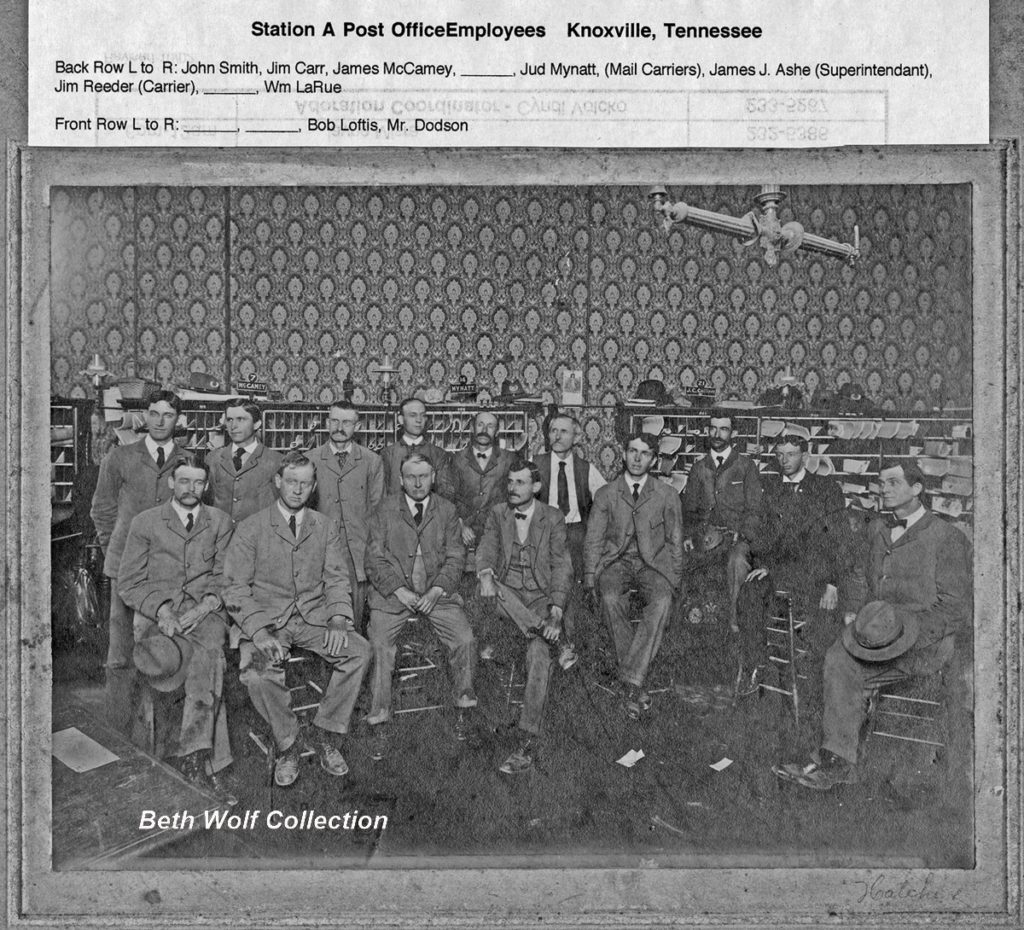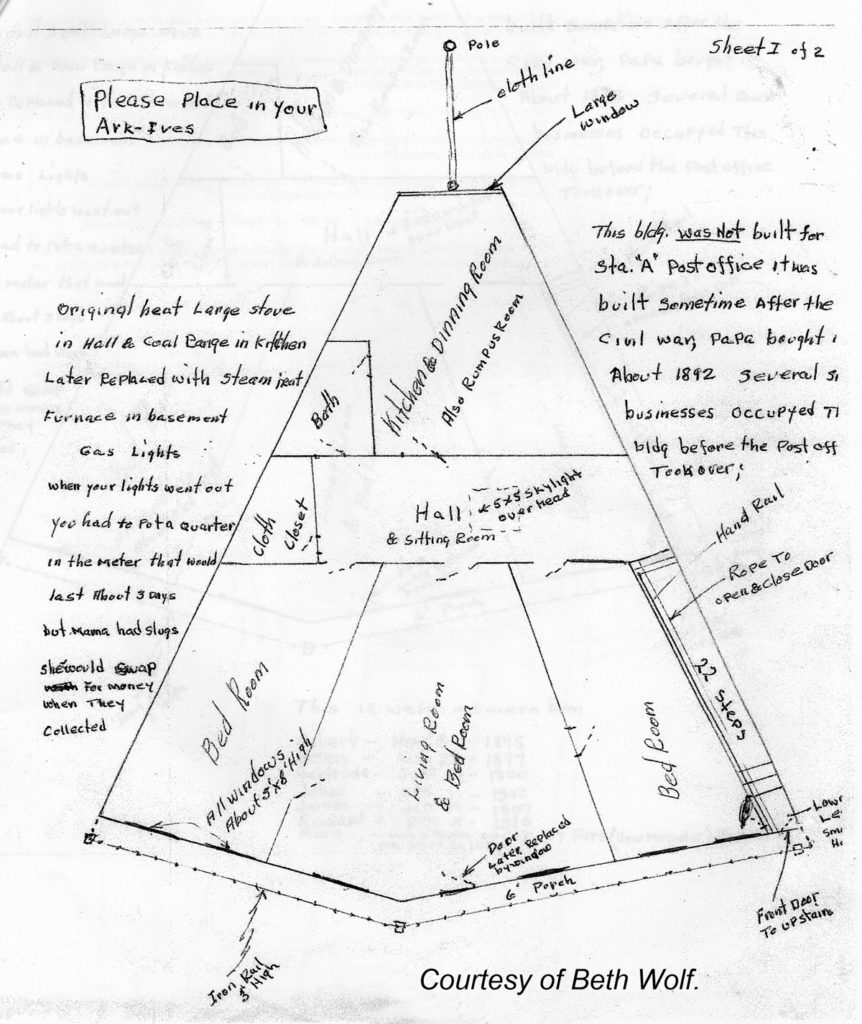Emory Place
Emory Place, just north of Downtown off Broadway, is enjoying a renaissance. The North Knoxville Fire Station #3, North Knoxville Post Office Station A, and the Walla Walla Gum Manufacturing Company are iconic establishments once located at this spot. And perhaps the most curious is the relatively short-lived Central Market from the mid-1880s.
KHP is proud to share the first in a new series of short documentaries Knoxville Chronicles with Jack Neely: Emory Place produced by Knoxville Weekend.
http://www.knoxvilleweekend.com/knoxville-chronicles-emory-place/
Jack describes the Central Market in his comprehensive history book, Market Square: A History of the Most Democratic Place on Earth (available in our online shop):
“In the late 19th century, the old Central Market was a significant entity, a long, two-way wood-frame building, bent to fits its odd space, greeting both Broad Street and Crozier, soon to be known as Central Avenue, perpendicularly. Within was room for 33 stalls. It offered several advantages; one was that farmers, especially those coming in from fruitful Union, Anderson, and Grainger Counties, would not have to negotiate city traffic, the narrow, twisted streets of downtown Knoxville, the streetcars that spooked the mules, the traffic jams that sometimes lasted for hours, the smoke and urban muck.”
Few images of the Original Emory Park, Knoxville’s first Downtown Park, exist. But photographs of this mid-1920s newspaper promotion show the park’s grass and trees, and the Firefighters Memorial statue that stood there for several years. (The statue now stands in front of the Downtown Fire Station on Summit Hill Drive.) Established in a space left by the Central Market project, in 1905, Emory Park was named for a popular victim of the New Market Train Wreck of 1904, Reverend Isaac Emory (1830-1904). (Courtesy McClung Historical Collection.)
In addition, new information has come in through KHP’s new community engagement program, Knoxville Shoe Box. Special thanks to Beth Wolf for sharing her family history with us, particularly concerning her great-grandfather, James J. Ashe, and his connections with the former post office at Emory Park.
North Knoxville Post Office Station A
Until about 1883, there was no mail delivery service in Knoxville, so to get their mail, residents had to visit the general Post Office downtown at the Custom House on Market Street. Free rural delivery routes commenced around 1904. James A. Ashe, one of Knoxville’s first five mail carriers, served 12 years as a carrier before appointed as superintendent of carriers and later postmaster for Station A at Emory Park. Later in his career, Ashe became Finance Clerk, akin to Assistant Postmaster.
Postmaster James J. Ashe (center with his son, John E. Ashe) poses with the staff at Station A in Emory Park. (Courtesy of Beth Wolf.)
One of the tales John Ashe (born 1902) recalled his family loved to tell is when his father James J. Ashe borrowed the post office station’s horse about 1894 to “pull the buggy” on a date with his future wife, Nellie Fleming. “I don’t know if the horse and buggy was to impress the young lady but the horse did its duty. It seems that every time they passed a mail box, the horse stopped so the mail could be collected.”
Inside Station A Post Office at Emory Place. Courtesy of Beth Wolf.
According to Ashe family recollections, the post office building was originally built “sometime after the Civil War, and Papa (James J. Ashe) bought it in 1892. Several businesses occupied the building before the post office took over.” James A. Ashe the following sketches of Emory Park and the layout of the post office building circa 1920:
Early Knoxville Mail Services
In 1920, James A. Ashe also shared memories in the Knoxville Sentinel of downtown Knoxville from his view as a mail carrier. “I really recall the time when there were not more than 8,000 people in Knoxville and part of Gay Street was a corn field and Market Square was a blackberry patch. I first carried mail in the uptown district, my route took in all the territory from the Tennessee River to the Southern railway tracks and between First and Second Creeks. I began where the Holston Bank now stands, in those days.” (Knoxville Sentinel, June 8, 1920.)
Another of the original five postmen, African-American Shaderick Carter, carried the mail for 37 years. Looking back on the early part of his time he stated, “In those days there were no business firms north of the Southern railway tracks and not so awfully many residents. I carried all the territory from the Brookside cotton mill district across through north Knoxville, all around the power house and out into Park City. Of course in those days there was not any parcel post and we rarely had any magazines and just a few papers.” (Knoxville Sentinel, June 8, 1920.)
Special thanks to Knoxville Weekend and Beth Wolf.











